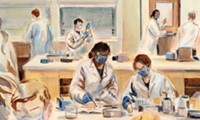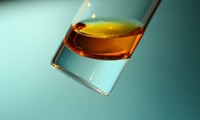Advertisement
Grab your lab coat. Let's get started
Welcome!
Welcome!
Create an account below to get 6 C&EN articles per month, receive newsletters and more - all free.
It seems this is your first time logging in online. Please enter the following information to continue.
As an ACS member you automatically get access to this site. All we need is few more details to create your reading experience.
Not you? Sign in with a different account.
Not you? Sign in with a different account.
ERROR 1
ERROR 1
ERROR 2
ERROR 2
ERROR 2
ERROR 2
ERROR 2
Password and Confirm password must match.
If you have an ACS member number, please enter it here so we can link this account to your membership. (optional)
ERROR 2
ACS values your privacy. By submitting your information, you are gaining access to C&EN and subscribing to our weekly newsletter. We use the information you provide to make your reading experience better, and we will never sell your data to third party members.
Synthesis
Waking The Sleeping Beauties
July 20, 2015
| A version of this story appeared in
Volume 93, Issue 29
I found “ ‘Sleeping Beauties’ Wake Up” quite interesting (C&EN, June 1, page 5). My own experience is both somewhat similar and somewhat different.
My awakening was gradual. In 1964, I published a paper with my student J. A. Stynes as coauthor on the preparation and some of the ion-exchange behavior of crystalline zirconium phosphate. I found this compound to be fascinating and published more papers on the subject.
Professor G. Alberti at Texas A&M University who had worked on the amorphous zirconium phosphate (ZrP) also began publishing on the crystalline product. Interest grew slowly from about four citations in 1964 to more than 1,000 per year from 2004 to 2014.
According to the Web of Science, my total citations are 23,382 (20,437 without self-citations). Not all of these are for ZrP, but I estimate nearly half are. This is based on the fact that some 200 papers with ZrP in the title have been published every year from 2004 until now.
Abraham Clearfield
College Station, Texas
A News of the Week article notes that seven of the top 15 “sleeping beauties”—papers that have become highly cited years after their publication—are chemistry papers. I suggest a more accurate description is that they are colloid chemistry papers.
The phenomena and analyses are cited in standard colloid chemistry texts. Unfortunately, colloid chemistry has fallen asleep in most universities. Just as the prince arrived and awoke the sleeping beauty, Pierre-Gilles de Gennes (1991 Nobel Prize in Physics) rekindled a great interest in questions where dimensions are small and surface forces large.
What was once called colloid chemistry is now called soft-matter physics. And I hope it lives happily ever after.
Ian Morrison
Acton, Mass, .




Join the conversation
Contact the reporter
Submit a Letter to the Editor for publication
Engage with us on Twitter